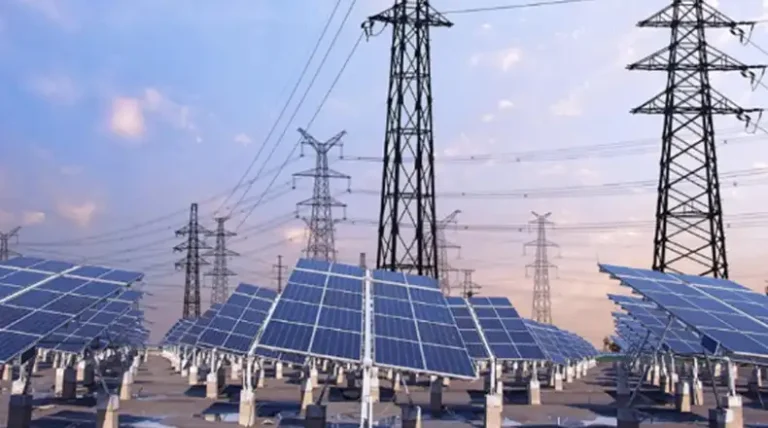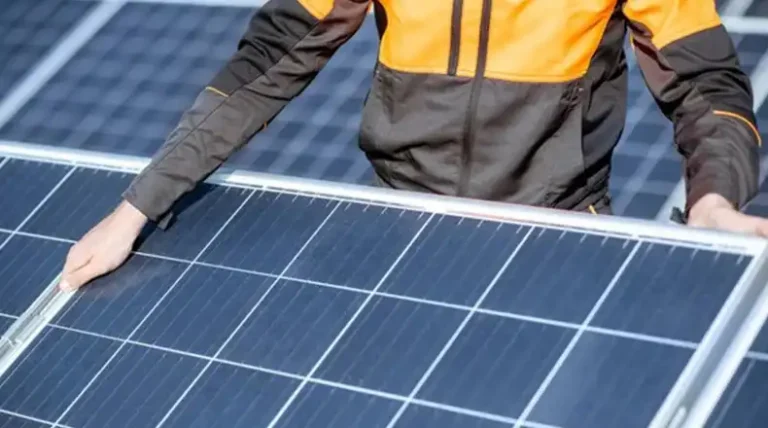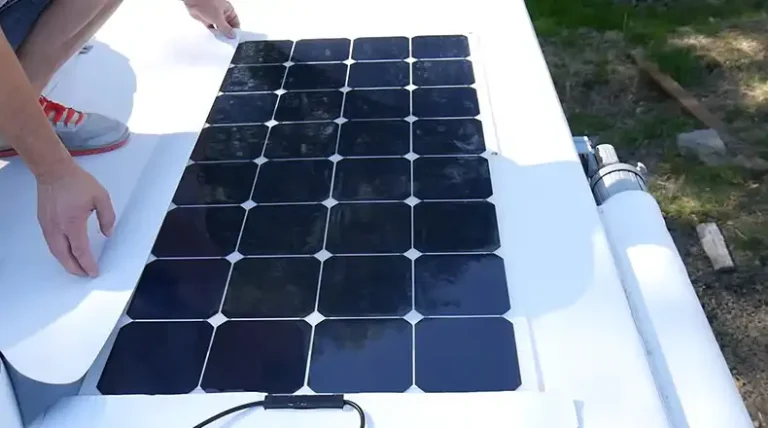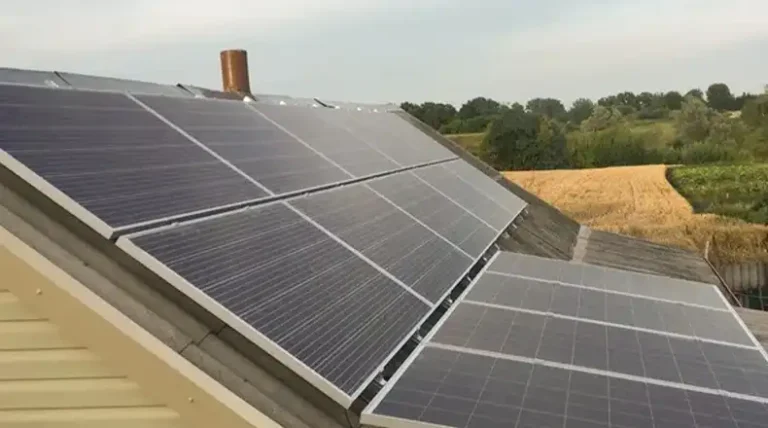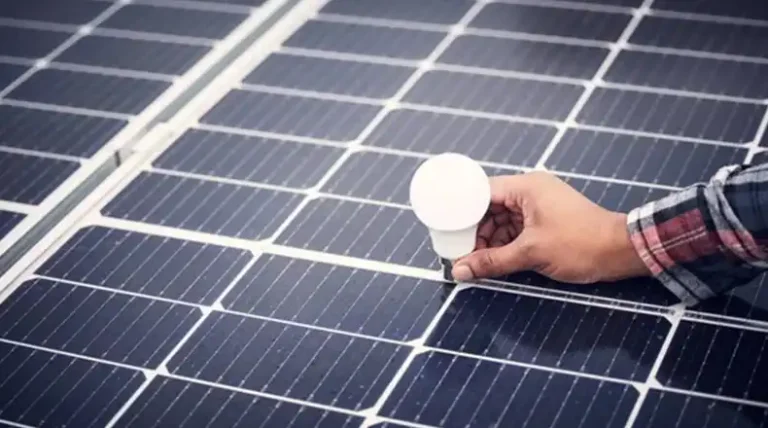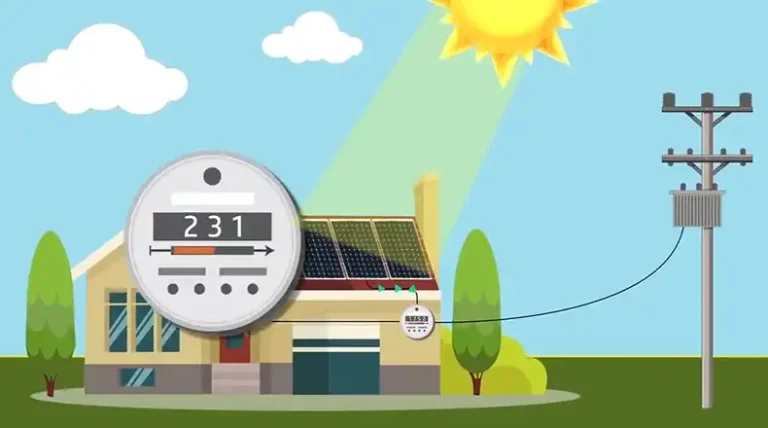Can You Put Solar Panels on a Gazebo? What to Consider
Installing solar panels on a gazebo can provide homeowners with an effective way to generate clean, renewable electricity while also enhancing their outdoor living space. With proper planning and consideration of key factors like optimal solar exposure, weight load capacity, and local regulations, gazebos integrated with solar panels can offer both environmental and financial benefits.
In this article, I take an in-depth look at the viability and process of installing solar panels on gazebos. BTW, yes, you can put solar panels on a gazebo. Read on to find out how it benefits you, how to do it and what are some other things you can consider for solar panel installation.
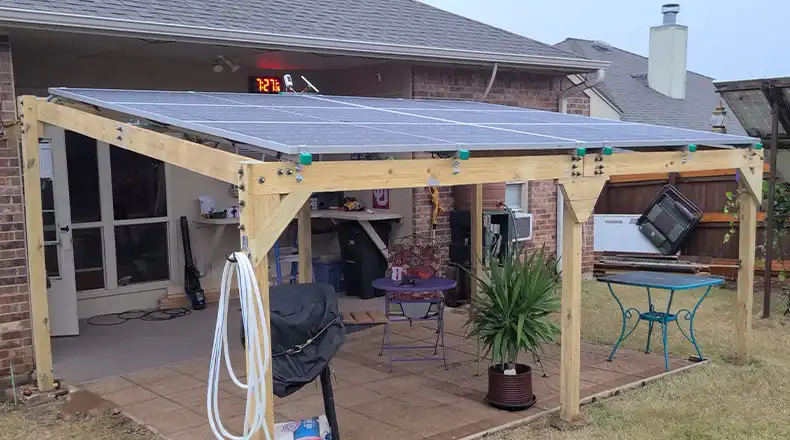
Benefits of Solar Panels on Gazebos
Adding solar panels to a gazebo structure provides a number of valuable advantages:
Clean, Renewable Source of Electricity
By installing photovoltaic solar panels on a gazebo, homeowners can tap into the sun’s plentiful energy and convert sunlight into usable electricity to power various devices and needs. This electricity is clean and renewable, without generating any greenhouse gas emissions or other pollutants. Solar power on a gazebo allows families to reduce their environmental footprint.
Reduce Electricity Bills
One of the top reasons homeowners install solar gazebos is to reduce their traditional electric grid dependence and monthly utility bills. By generating a portion or all of the electricity needed for outdoor lighting, appliances, charging stations, and other uses from the gazebo’s solar panels, households can significantly cut their electric expenses. The sun provides free “fuel” so you can slash your bills.
Provide Emergency Backup Power
Solar gazebos also offer households a backup source of electricity in the event of a power outage. Having essential lights, medical devices, refrigeration, fans, and electronics powered during a grid failure provides peace of mind. Families with solar gazebos maintain access to electricity even when the whole neighborhood goes dark.
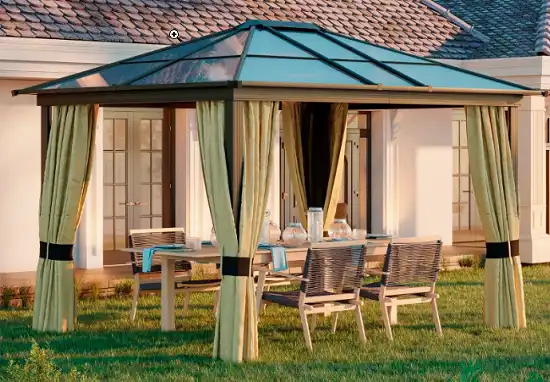
Aesthetically Pleasing Design Element
Integrating solar technology into a gazebo structure can provide an attractive, modern architectural element to your backyard environment. The visibility of the solar panels on the gazebo roof makes a bold sustainability statement and demonstrates your values. Solar gazebos add a beautiful design feature in addition to their functional benefits.
Tax Credits and Incentives Provide Savings
Installing a solar-integrated gazebo allows homeowners to take advantage of renewable energy tax credits, rebates, and other savings programs. There are federal tax credits in addition to state and local incentives that reward utilizing solar power. These initiatives provide significant savings on the upfront costs of a solar gazebo. Taking advantage of available solar incentives is key.
What Do You Need to Consider for Solar Gazebo Installation
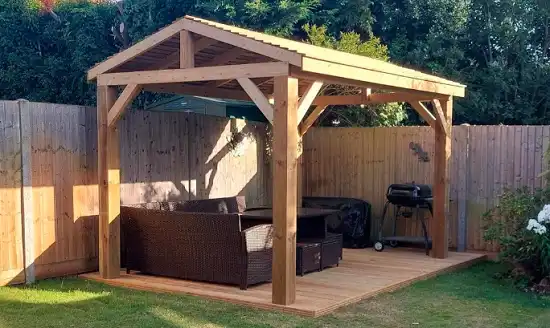
While solar-powered gazebos provide many advantages, there are some important factors to take into account when exploring this option:
Sufficient Gazebo Size and Roof Area
First, ensure that your gazebo structure and roof area are large enough to accommodate the number of solar panels required to meet your electricity demands. The panels cannot be crammed in and need ample surface area. Consider the gazebo’s measurements and layout.
Roof Structural Integrity and Weight Limits
It is also crucial to verify that the gazebo’s roof has the structural integrity to safely support the additional weight load of multiple solar panels. Consult with solar installers and structural engineers to assess the roof’s limits. Reinforcements may be needed.
Sun Availability Throughout the Day
Take sun exposure patterns into account. Are there obstructions like trees or buildings that could cast shade on the gazebo and reduce how much direct sunlight the solar panels receive? Proper orientation and minimal shading are ideal for productive solar panels.
Solar Panel Types Suitability
There are several solar panel varieties, like flexible thin panels or rigid glass panels, that could be compatible with gazebo installation. Research which option would integrate best with your structure. Amorphous and monocrystalline are among top choices.
Local Regulations and Permit Requirements
Be sure to research, understand, and comply with all local building codes and solar installation policies for your area. Many regions require permits for solar projects. Avoid fines by getting the proper approvals.
Cost Analysis and Payback Timeframes
Do a cost analysis of the full system with considerations like panel costs, mounts, wiring, labor, taxes, and incentives. Also project your payback period to recoup the initial investment through utility savings. Crunch the numbers thoroughly.
How to Install Solar on Gazebo
To properly install solar panels on a new or existing gazebo, there are several steps involved:
Site Assessment for Solar Exposure
A sunlight analysis of the potential gazebo location is crucial for understanding how much direct sun exposure the solar panels will receive. Analyze shading patterns from trees, buildings and other objects throughout the day.
Determine System Size and Electricity Needs
Factor in how much electricity you aim to produce from the solar gazebo to run lighting, appliances, electronics, etc. This will dictate the number of solar panels needed. Oversize your system to allow for future expansion.
Acquire Necessary Permits
Check your local jurisdiction’s regulations and apply for any required building or electrical permits before installing the solar gazebo. Permits ensure proper inspections.
Select Suitable Mounting Methods
Choose mounting rails, standing seam clamps, or racking methods that integrate well with your gazebo design and provide secure panel attachment.
Make Electrical Connections
Have a licensed, professional solar electrician connect the gazebo’s solar array safely to your home’s electrical system and grid. Ensure proper grounding, surge protection, and wiring.
Activate the System and Conduct Maintenance
Once the solar gazebo system is installed, activated, and inspected, perform periodic maintenance like cleaning the panels, checking connections, and monitoring performance.
Additional Solar Gazebo Applications
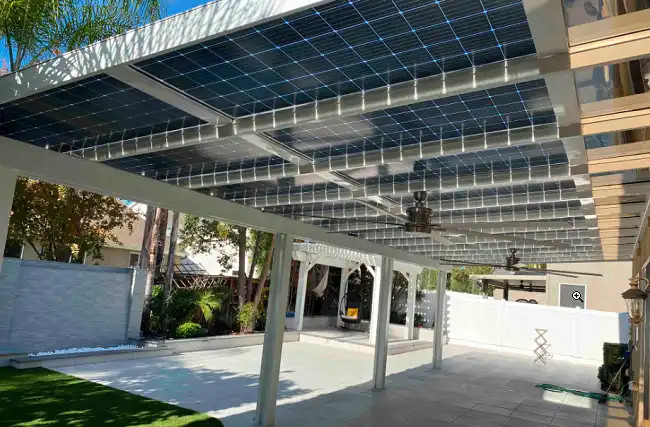
Beyond traditional stand-alone gazebos, there are other structures well-suited for solar panel additions:
Patio Covers and Pergolas
Shade-providing patio covers and pergolas are excellent candidates for installing solar panels unobtrusively while creating an outdoor living space.
Sheds, Pool Houses, and Greenhouses
Even small solar panel systems mounted on sheds, pool houses, backyard studios, and greenhouses can generate supplemental power.
DIY Solar Structures
Consumers can purchase solar kits tailored for gazebos, carports, garages, and other customized structures to install solar themselves.
Electric Vehicle Charging Stations
Gazebos kitted out with solar panels can provide clean electricity to charge plug-in hybrid or electric cars.
Rooftop Solar Vs Gazebo Solar: How Do They Compare
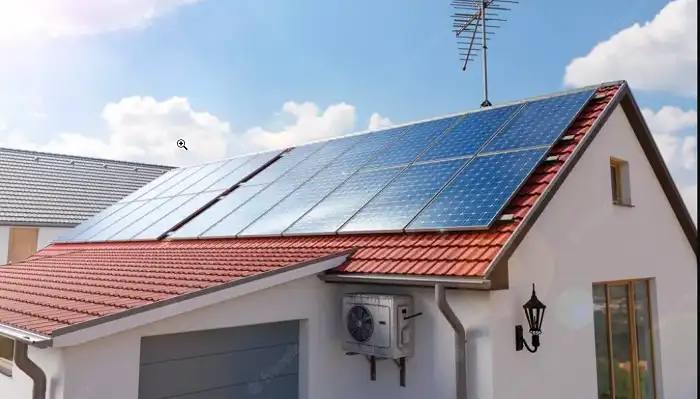
There are some key differences between traditional rooftop-mounted solar panels and solar panels integrated into a gazebo structure:
Limitations of Rooftop Solar
While suitable in many cases, rooftop solar has a few potential drawbacks. Existing roofs may lack enough open area for all the panels needed. Trees or other buildings can cause shading issues. Racking systems can add costs and roof penetration risks. Rooftops also restrict design options.
Benefits of Solar Gazebos
Gazebos provide much more freedom in the placement, positioning, and design integration of solar panels. You can customize the structure specifically for optimal solar setup and generation. Gazebos also allow you to avoid obstacles and risks of retrofitting solar on an aging roof.
Performance Differences
Well-positioned rooftop solar systems will offer very direct sun exposure in many cases, potentially outperforming gazebo solar. However, heavy shade or obstructions could make gazebo solar a better performer. Location, layout, and panel angles are key variables.
Aesthetic Appeal Favoring Gazebos
Due to their prominence and visibility, rooftop panels can detract from a home’s architecture and disrupt sightlines. Solar gazebos keep panels low profile and pleasingly integrated into the outdoor environment and backyard aesthetics.
End Notes
While requiring careful planning and consideration of key factors like sun availability, permits, and costs, installing solar panels on a gazebo can be a smart investment. Solar-integrated gazebos provide homeowners with a clean, renewable power source and a beautiful backyard addition. With proper year-round sun exposure and a robust, reinforced structure, a solar gazebo can slash electric bills, keep the lights on during outages, and demonstrate sustainability. By tapping into available tax credits and incentives, homeowners can make their gazebo purchase pay off in energy savings. With a well-designed solar system, you can enjoy sunlight from your own backyard.
FAQs
- How many hours per day of sun do solar gazebo panels need?
Ideally solar panels should get full, direct sun for 6-8 hours per day year-round. More sun exposure results in greater electricity production.
- What are the best solar panels for gazebos?
Monocrystalline and polycrystalline solar panels tend to have the highest efficiency. Flexible thin panels are also suitable for gazebos.
- Do I need to reinforce my existing gazebo to add solar panels?
You may need added reinforcement like extra support beams or posts to accommodate the additional weight load of panels. Consult engineers.
- What size solar system can a gazebo support?
With proper engineering and construction, a large gazebo could support an expansive 20-30 panel solar array generating up to 10 kilowatts or more.
- Can a solar gazebo provide a house’s entire electricity needs?
In some cases, with an adequately sized and exposed system, a solar gazebo could generate sufficient electricity to power an entire efficient home. Solar capacity can be expanded.

